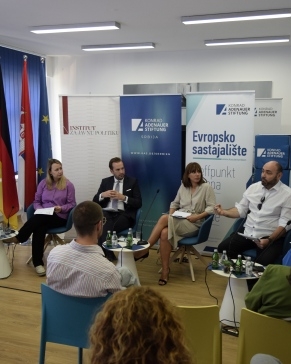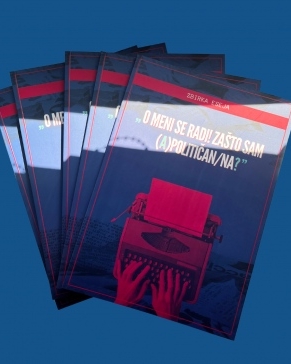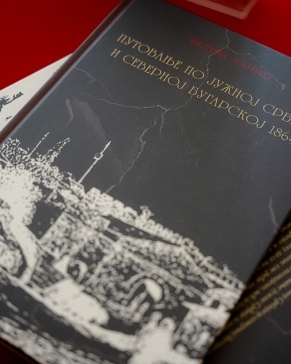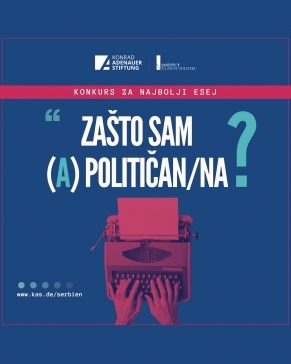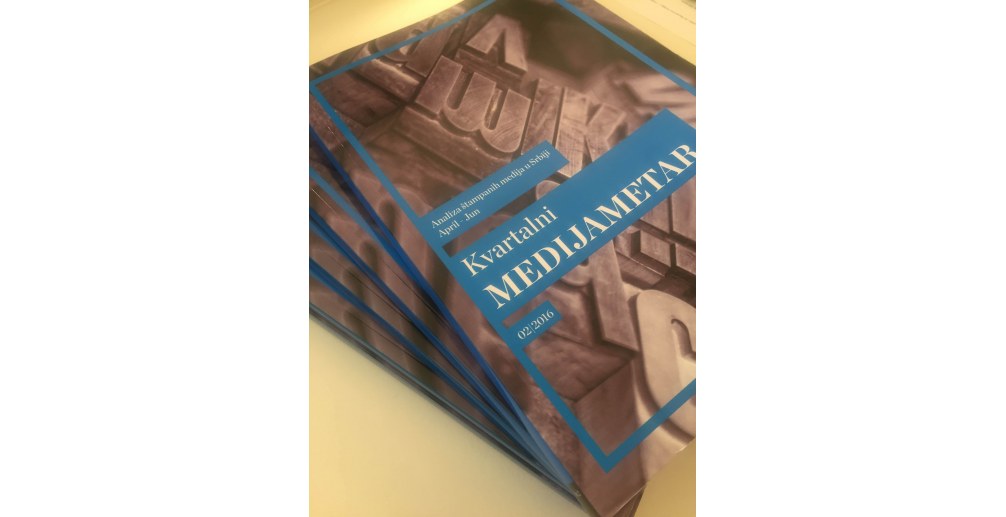
The diversity of viewpoints, arguments and conclusions in print media is confirmation that there exists freedom in public field, i.e. freedom of opinion and expression, which is the conclusion of the analysis of the sixth issue of “Quarterly Mediameter – Analysis of the print media in Serbia”
Research of the Public Policy Institute in cooperation with the Media archive Ebart, which was conducted on 2,106 articles from front pages of newspapers and weeklies published between April and June of 2016, showed that the media have a strong editorial policy, i.e. that the topics and actors are constantly represented in the same manner and in the same value context.
For example, in Politika, Večernje novosti, Blic, Danas, Kurir, Alo! and Informer, the largest number of texts on front pages was dedicated to Prime Minister of Serbia Aleksandar Vučić (674 texts), Minister of Foreign Affairs Ivica Dačić (247) and President of the Republic Tomislav Nikolić (194).
The highest number of negative articles about political actors from the government is also dedicated to them – Dačić (35), Vučić (25) and Nikolić (19).
When it comes to politicians of the opposition, the most represented were Bojan Pajtić (197 texts), Vojislav Šešelj (178) and Boris Tadić (127), while the highest number of negative texts was written about Pajtić (59), Saša Radulović (19) and Šešelj and Čedomir Jovanović (17 each).
Political analyst Dejan Vuk Stanković, author of discursive analysis of weeklies NIN, Vreme, Novi magazin, Nedeljnik and Pečat, noted that the weeklies are critical of the government - NIN and Vreme radically so, Novi magazin and Nedeljnik moderately, while Pečat is critical of government’s European policies.
As he has pointed out, Prime Minister Vučić is painted in negative moral and political value context by radically critical weeklies.
"Vučić is presented as an authoritarian leader who undermines democratic institutions, violates liberties and the rule of law, introduces media dictatorship, while government led by him is incompetent, without results and corrupt", Stanković has said.
He added that the case of demolition of buildings in Savamala has polarized media landscape, and that those who are critical of the government have emphasized that this case highlights the lack of rule of law.
Stanković also noted the phenomenon of associating authorities with balaclavas, which were used in demolition in Savamala, that serves as an indicator that the government is non-transparent and violent.
Research methodologist Danica Laban presented research results, noting that majority of texts are unbalanced, i.e. that they are based on the attitudes of one interviewee or more of them representing the same opinion.
Editor Velimir Ćurgus Kazimir pointed out that it was expeced that reporting on elections, which were held in Serbia during mentioned period, would “cover all aspects of social life", however, the exactly same effect was result of writing about the murder of singer Jelena Marjanovic.
"This represents a significant indicator of the socio-political situation in Serbia, and shows how media acquire their influence, popularity and mass," Ćurgus Kazimir has said.
He explained that research has shown that influence, popularity and mass are acquired by topics that are not only sensationalistic, but too tragic and personal as well; the professionalism of journalists is also brought into question.
"These topics are used in such a way that one wonders where have prudence, privacy and respect for human intimacy disappeared, where is verification of sources and accuracy of what is said," Ćurguz Kazimir has concluded.
Mediameter is a research and scientific-expert project, which monitors the development of the print media in Serbia through the analysis of value judgments and through the discourse analysis. Mediameter is aimed at improving the professional and ethical standards of media reporting and analysis. The research methodology was made in accordance with the highest scientific standards by a team with extensive experience in this field. Quarterly Mediameter is published four times per year. Five issues have been published up until now and they cover period between January 2015 and June 2016. They are also available in electronic format on web page www.medijametar.rs

